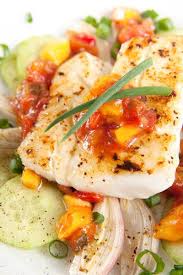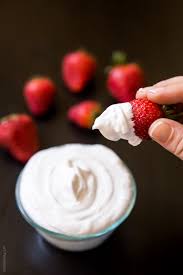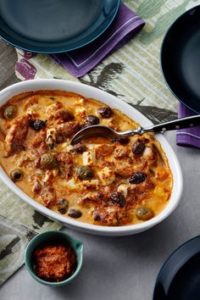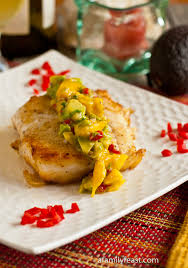
Ginger Mango Salsa
1 mango, peeled and diced
½ small red onion, finely chopped
1 teaspoon fresh grated ginger
2 garlic cloves, minced
½ red bell pepper, finely chopped
Juice from ½ a lime
1/2 a bunch of cilantro, diced
In a medium sized mixing bowl, mix together the above ingredients and set aside.
Cilantro Sauce
½ cup homemade fat free mayo
½ cup cilantro
1 teaspoon cumin
2 teaspoons lime juice
Hot sauce to taste – I use Peri Peri but you can use whatever suits you
In a food processor or blender add all of the above ingredients and blend together until smooth.
The Fish
1 kg halibut (Or however much you want to make! One kg serves 10 adults.)
2 tablespoons of coconut oil
Sea salt and black pepper to taste
1. Season both sides of the fish filets with salt and pepper.
2. Heat the coconut oil in a large pan over medium to medium high heat.
3. Once the oil in the pan is nice and hot, place the fish filets in the hot coconut oil in and cook for 3-4 minutes per side
4. Serve the fish topped with the Mango Ginger Salsa and drizzled with the Cilantro Sauce.
As always, Enjoy!!
 Miss yogurt in the morning? Try these three delicious dairy-free options with berries and coconut flavor!
Miss yogurt in the morning? Try these three delicious dairy-free options with berries and coconut flavor!


